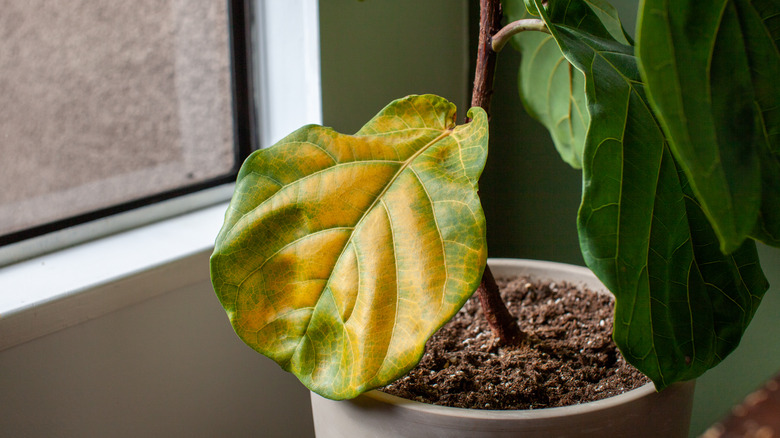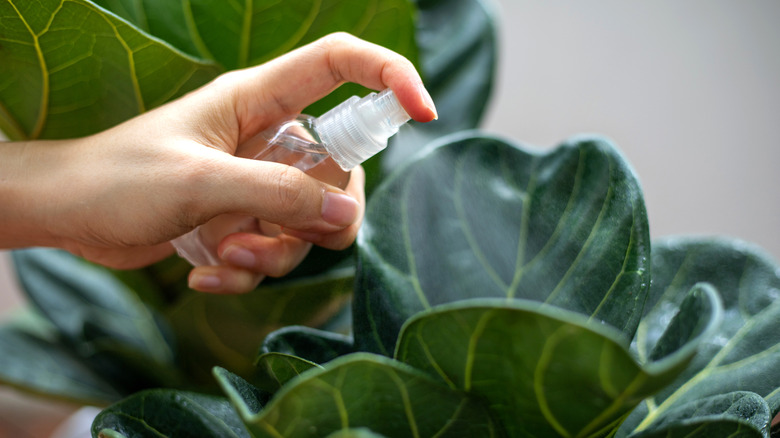What To Do If The Leaves On Your Fiddle Leaf Fig Are Turning Yellow
There's a unique charm that a fiddle leaf fig brings to a space. Yet, imagine your surprise when those once-lustrous leaves of your plant exhibit disconcerting yellow patches. This transition from a lively green to a somber yellow might leave you feeling both perplexed and anxious. The good news? This change isn't irreversible. The yellowing is your plant's way of communicating with you, signaling that it's not entirely comfortable with its current conditions. Maybe you're watering it a tad too much, or perhaps the roots are entangled in an unhealthy dance with rot. Light, too, plays a critical role; too much or too little can distress your fiddle leaf fig. Additionally, the soil, the very foundation of its life, needs to be nutrient-rich and well-draining to ensure the plant's vitality.
Understandably, these shifts in your plant's health can make you question your care of your fiddle leaf fig. The key is to not feel overwhelmed. Instead, roll up your sleeves and start with a thorough assessment. Understand that each yellow leaf is a cry for help, pointing you toward the specific adjustments needed in its care routine. Responding promptly and making the necessary changes will address the immediate issue and fortify your pant against future problems.
Adjust your watering techniques
Maintaining the perfect water balance for your fiddle leaf fig is much like walking a tightrope. If you tip towards overwatering, those vibrant leaves might turn an alarming shade of yellow. Your enthusiasm for keeping your fiddle leaf fig hydrated can unintentionally harm its roots: If your plant's roots are submerged in constantly damp soil, they struggle to breathe, making them vulnerable to rot and fungal infections. This hostile environment can cause once-healthy, white roots to deteriorate, turning them into a mushy, dark brown, or black mess. A top tip? Allow the soil to dry a bit between watering sessions. Before you reach for that watering can again, take a moment to touch the soil to ensure the upper 4 inches of soil are dry.
However, if the damage is already done and you find soft, squishy roots, it might be time for some plant surgery. Carefully remove your plant from its current soil, discarding any rotting root sections. Detaching these unhealthy leaves can help your fiddle leaf fig regain health and keep looking its best. You might also want to analyze the soil's quality to ensure it's nutrient-rich. A lack of essential nutrients in your plant's soil (like nitrogen, magnesium, and iron) might cause your plant's leaves to turn yellow. In such cases, you'll need to improve the soil's condition by adjusting its pH and adding NPK fertilizer or probiotics.
Monitor the plant's environment
Your fiddle leaf fig, much like you, thrives in certain conditions and environments. Think of it as a living barometer, with its leaves often reflecting how it feels about the care you're providing. One of its primary needs is the right amount of light. This plant has a strong inclination for luminous, indirect sunlight. If you've placed it in a spot that's dim or lacking natural light, it's likely shouting out its displeasure through those yellowing leaves. Your mission? Find a space where it can bask in sunlight without being directly under its scorching rays. That direct, noonday sun can be a bit overkill, causing brown patches on its leaves.
Now, consider the ambiance. The temperature and mood of its environment are crucial. Your fiddle leaf fig doesn't take well to sudden changes, preferring a stable, consistent setting. Have you recently shuffled its position? If so, be ready for a brief period of leafy sulking, which will appear as temporary yellowing. Stay observant. If the yellowing continues, it might be time for another move.
While inspecting, don't forget to inspect for uninvited guests. Pests might be making a home on your plant, leading to yellow leaves. While they're less frequent, such infestations can be a nuisance. But don't fret! A gentle application of insecticidal soap or neem oil is often enough to evict these unwelcome visitors and return your plant to its vibrant self.


